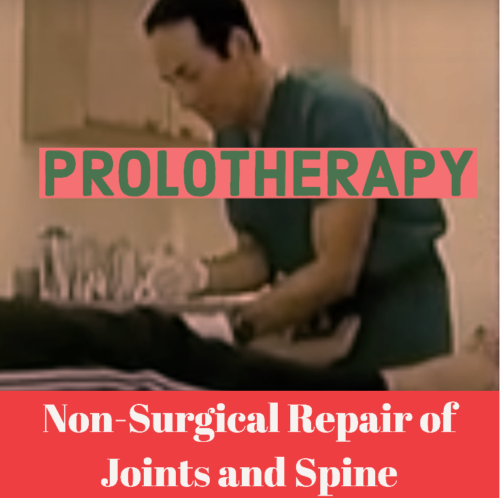In this article, we will discuss the answers to some of the questions you may have about Prolotherapy treatments. Plus, we will elaborate on some Prolotherapy facts.

1) What does Prolotherapy treat?
2) How many Prolotherapy treatments will I need?
3) Will I need to continue care after treatment?
4) Is Prolotherapy the same thing as cortisone shots?
5) Are Prolotherapy treatments safe?
6) Do the Treatments Hurt?
7) Will my insurance cover Prolotherapy treatments? What are the fees?
8) Is it advisable to drive or work after Prolotherapy?
Prolotherapy is one of the regenerative techniques we use at our clinic. It is a non-surgical regenerative injection technique that introduces small amounts of solution to the site of painful and degenerated ligaments, their insertions (entheses), tendons, joints, and other joint structures. It usually takes place over several treatment sessions to promote the growth of normal cells and tissues.
The treatment stimulates the body’s own natural healing processes in cases of chronic musculoskeletal pain and instability. It boosts the regenerative processes in the joint that will facilitate the repair and regrowth of connective tissue, ligaments, and tendons. And it will result in increased strength, repaired cartilage, and the stabilization of other joint structures to bring about the healing of the entire joint.
The healed ligaments and tendons produced after Prolotherapy appear much the same as normal tissues, except that they are thicker, stronger, and contain fibers of varying thickness, testifying to the new and ongoing creation of tissue.
Learning points
|
|
Schedule Your Appointment Today!
The average person requires 6 treatment sessions given at 2 to 4-week intervals. But the number of treatments varies with each patient. Difficult (post-surgical, long-standing, etc) or other complicated cases may require 8, 10, or 12 treatments. Many patients feel the relief of pain after the 3rd or 4th treatment. Occasionally some of our patients have reported some relief of pain after only two sessions.
Once treated, the problem should be fixed. Healing will continue to take place for at least one year following treatment. Of course, if there is an injury or insult to the area treated, additional treatment may be needed.
Long-term studies have shown that cortisone injections actually weaken tissue. On the other hand, Prolotherapy uses proliferants, which cause the ligaments and tendons to be strengthened. Cortisone is one injection. But Prolotherapy consists of multiple injections to an area so as to induce healing in the biggest area possible.
Prolotherapy is an extremely safe procedure. As with any procedure, there are risks and side effects which will vary depending on the area being treated. The doctor will discuss these possibilities fully with patients during the pre-treatment consultation. The risks with Prolotherapy than surgery, and even less than taking aspirin or Motrin for a lifetime to temporarily alleviate chronic pain.
As many of my patients have said, “the pain from the injections was nothing compared to the pain that I was experiencing prior to Prolotherapy”. Most say after the Prolotherapy treatment, “It wasn’t that bad.” There are a few people, however, who may need help in receiving Prolotherapy.
For those patients that find Prolotherapy uncomfortable, Dr. Fields can also apply a cold spray (ethyl Chloride) or a gel of Lidocaine to numb the skin prior to the treatment. If additional help is needed, a prescription can be given for Ultram, Tylenol with codeine, or Vicodin. This can be taken one hour prior to your Prolotherapy treatment. Additionally, we have calming music to listen to, stress balls, and hot packs to help ease one’s mind during the treatment. Ninety-nine percent of our patients receive treatments without painkillers and do just fine.
For information regarding insurance and fees Click Here to visit our common questions section.
You can drive after you receive Prolotherapy. However, you may feel a little stiff but will be able to continue with your activities of daily living. Keep in mind that getting your neck done is different than, say, receiving Prolotherapy to your hand. Your neck will be stiff after treatment, which means it will be difficult to turn to the left and to the right. Having a driver would be a good idea.
The same goes with being capable of working. Most of us are able to go back to work after the treatment. There are no work restrictions. However, depending on your type of work, you may want to rest afterward. Overall, it would be advisable to have a driver for your first treatment to see how you personally feel afterward and make the appropriate decision.